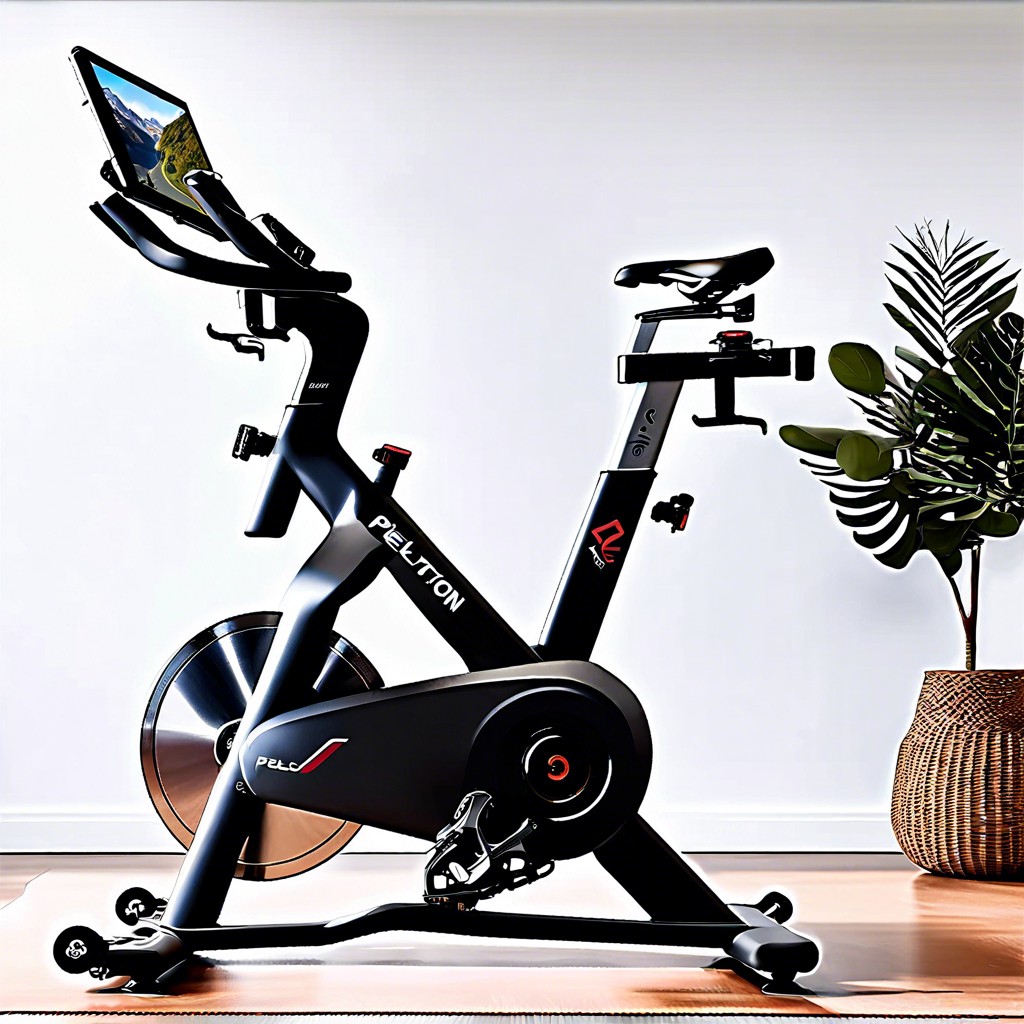This how-to article provides a step-by-step guide on selling your Peloton bike efficiently and effectively.
Key takeaways:
- Inspect your Peloton bike thoroughly before listing it for sale.
- Price your bike competitively based on market trends and condition.
- Choose the right sales platform that caters to your target audience.
- Prioritize safety by meeting in public, using cash, and protecting personal data.
- Finalize the sale securely with transparent communication and verified payment methods.
Determining the Peloton Bike’s Condition

Before listing your Peloton bike, inspect it thoroughly to judge its current state accurately. Look for wear and tear on the seat, handlebars, and pedals. Test the electronics – the touchscreen should respond promptly and display crisp images. Ensure the bike’s software is updated to the latest version for a smoother transition to its new owner. Spin the wheels; they should glide silently without any hiccups. Take note of any cosmetic damage; honesty about the bike’s appearance avoids any hiccups in the sale process. Remember, clear and truthful representation saves you from future grievances and helps buyers trust what they’re investing in. A well-maintained bike can command a higher price.
Setting a Competitive Price
Assessing the market is like taking a pulse on what buyers are willing to cough up. Start by checking out current listings for Peloton bikes. This little bit of homework gives you a ballpark figure. Remember, a shiny, barely-used bike fetches a premium over one that’s been the faithful companion of a daily rider.
Factor in wear and tear. Does your bike look like it just rolled off the showroom floor, or does it show the badges of many sweaty battles? Be honest; a bike with cosmetic setbacks or mechanical quirks can’t demand top dollar.
Think about added value. Bundling accessories like weights, headphones, or cycling shoes could bait a hook that snags buyers faster.
Be prepared to negotiate. Set your initial asking price slightly higher to give a little wiggle room. But stay within the bounds of reason; sky-high prices scare off potential buyers faster than a skunk at a lawn party.
Time can be your friend or foe. If you’re not in a rush, wait for the right offer. Urgency, on the flip side, means you might need to lower expectations to speed up the sale.
Remember, pricing isn’t just about recouping costs; it’s about playing the market smart. Set a price that sparks interest and stands up to the competition.
Choosing the Right Sales Platform
The landscape of online marketplaces is vast, with each platform attracting a distinct audience. Platforms like eBay appeal to a wide net of potential buyers but involve shipping—which for a hefty Peloton bike could be a logistical challenge. Local online marketplaces such as Craigslist or Facebook Marketplace cater to a nearby audience, reducing shipping hassles but may require more direct interaction with buyers.
Consider specialty fitness equipment sites for a targeted approach, where enthusiasts are willing to pay for quality gear. Additionally, Peloton-specific buy/sell/trade groups exist, teeming with dedicated followers looking to snag a deal.
Take crisp, clear photos from multiple angles and write an honest description highlighting your bike’s features and any wear. Transparency builds trust and helps avoid time-wasting inquiries. When listing, protect personal information and filter serious queries through the platform’s communication tools before sharing contact details.
Efficiency matters. Respond promptly to questions and be ready to negotiate. Patience pays off—a rushed sale might undercut a bike’s value. Prioritizing speed over the right fit can leave money on the table or worse, lead to a problematic transaction.
Safety Tips for Transactions
Let’s talk brass tacks about keeping yourself safe as you part ways with your trusty bike. It’s a jungle out there, and you’d rather not get tangled up in a bad deal. The key is to be as clear as crystal about payment terms. Cash is king to avoid the ol’ bounce-back that can happen with checks or dodgy digital transfers.
Meeting in a public spot is smart. It’s your best bet for a smooth exchange. Think coffee shops buzzing with people or a bank lobby. And if they’re giving off fishy vibes, trust your gut – no sale is worth compromising your well-being.
Always bring a friend when you’re dealing with a stranger. Strength in numbers is not just a saying; it’s practical advice. Plus, it never hurts to have an extra pair of eyes.
Remember to scrub your personal data off the Peloton before you say goodbye. You don’t want your sweat-soaked high scores ending up in the hands of the new owner, right? Just like you wouldn’t leave your diary at a bus stop.
In short, keep it public, keep it cash, and keep it clean, both data-wise and transaction-wise. Stick to these nuggets of wisdom, and you’ll stride through the sale with your peace of mind intact.
Finalizing the Sale Safely
Crossing the finish line with your sale requires a blend of vigilance and savvy. First, communicate transparently with the buyer, providing clear details about the transaction process. Insist on verified payment methods such as bank transfers or validated digital payment platforms to prevent fraud. Avoid accepting checks or money orders where possible, as these can be risky.
For in-person exchanges, select a well-lit, public space; police stations often serve as safe zones for such transactions. If the transaction is digital, use a service that provides buyer and seller protection. Lastly, retain all receipts and correspondence about the sale. Keep a record of the bike’s serial number and any other identifying features should you need them in the future. These steps will help you sell with confidence, paving the way for a smooth handoff.